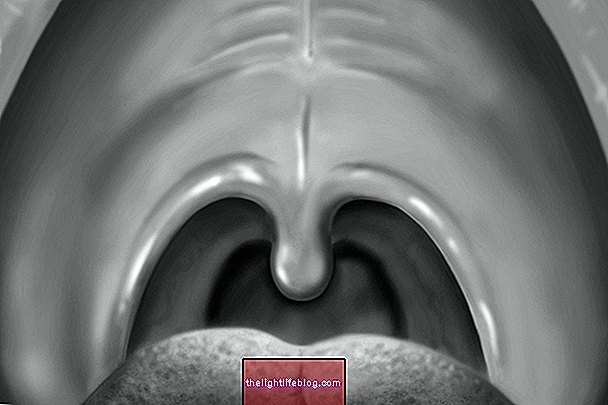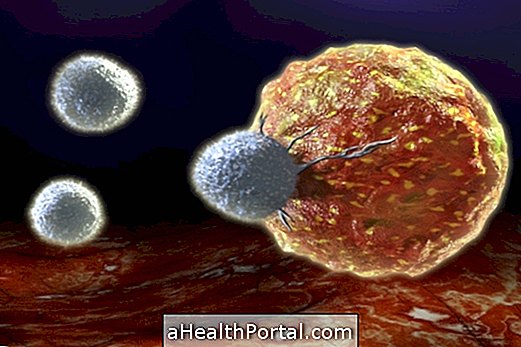Ameloblastoma is a rare tumor that grows in the bones of the mouth, especially in the jaw, causing symptoms only when it is very large, such as swelling of the face or difficulty in moving the mouth. In other cases, it is common that it is detected only during routine examinations at the dentist, such as X-rays or magnetic resonance imaging, for example.
Generally, ameloblastoma is benign and is more common in men between the ages of 30 and 50, however, it is also possible that a unicystic type ameloblastoma appears even before the age of 30.
Although not life-threatening, ameloblastoma gradually destroys the jaw bone and, therefore, treatment with surgery should be done as soon as possible after diagnosis, to remove the tumor and prevent destruction of the bones in the mouth.

X-ray of ameloblastoma
Main symptoms
In most cases, ameloblastoma does not cause any symptoms, being discovered by chance during routine checkups at the dentist. However, some people may experience symptoms such as:
- Swelling in the jaw, which does not hurt;
- Bleeding in the mouth;
- Displacement of some teeth;
- Difficulty moving your mouth;
- Tingling sensation in the face.
The swelling caused by ameloblastoma usually appears in the jaw, but it can also happen in the jaw. In some cases, the person may also experience weak and constant pain in the molar region.
How the diagnosis is made
The diagnosis of ameloblastoma is made with the biopsy to evaluate the tumor cells in the laboratory, however, the dentist may suspect ameloblastoma after X-ray exams or computed tomography, referring the patient to a specialist dentist in the area.
Types of ameloblastoma
There are 3 main types of ameloblastoma:
- Unicystic ameloblastoma: it is characterized by being inside a cyst and is often a mandibular tumor;
- Multicystic ameloblastoma: it is the most common type of ameloblastoma, occurring mainly in the molar region;
- Peripheral ameloblastoma: it is the rarest type that affects only the soft tissues, without affecting the bone.
There is also malignant ameloblastoma, which is uncommon but can appear even without being preceded by a benign ameloblastoma, which may have metastases.
How the treatment is done
The treatment for ameloblastoma must be guided by a dentist and, usually, it is done through surgery to remove the tumor, the part of the bone that was affected and some of the healthy tissue, preventing the tumor from reoccurring.
In addition, the doctor may also recommend the use of radiotherapy to remove tumor cells that may have remained in the mouth or to treat very small ameloblastomas that do not require surgery.
In the most severe cases, in which it is necessary to remove a lot of bone, the dentist can perform a reconstruction of the jaw to maintain the aesthetics and functionality of the bones of the face, using pieces of bone taken from another part of the body.
Was this information helpful?
Yes No
Your opinion is important! Write here how we can improve our text:
Any questions? Click here to be answered.
Email in which you want to receive a reply:
Check the confirmation email we sent you.
Your name:
Reason for visit:
--- Choose your reason --- DiseaseLive betterHelp another personGain knowledge
Are you a health professional?
NoMedicalPharmaceuticalsNurseNutritionistBiomedicalPhysiotherapistBeauticianOther





















